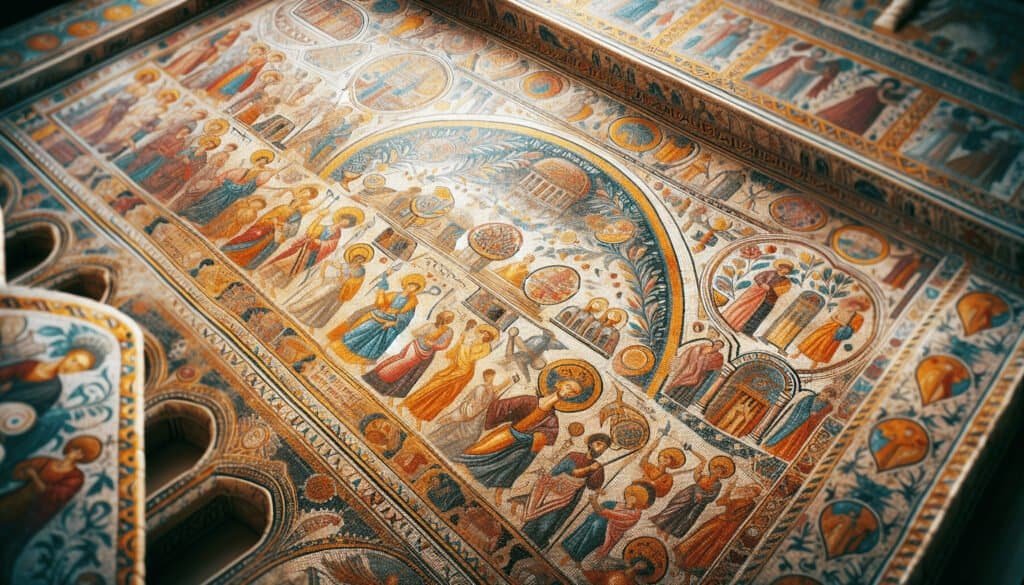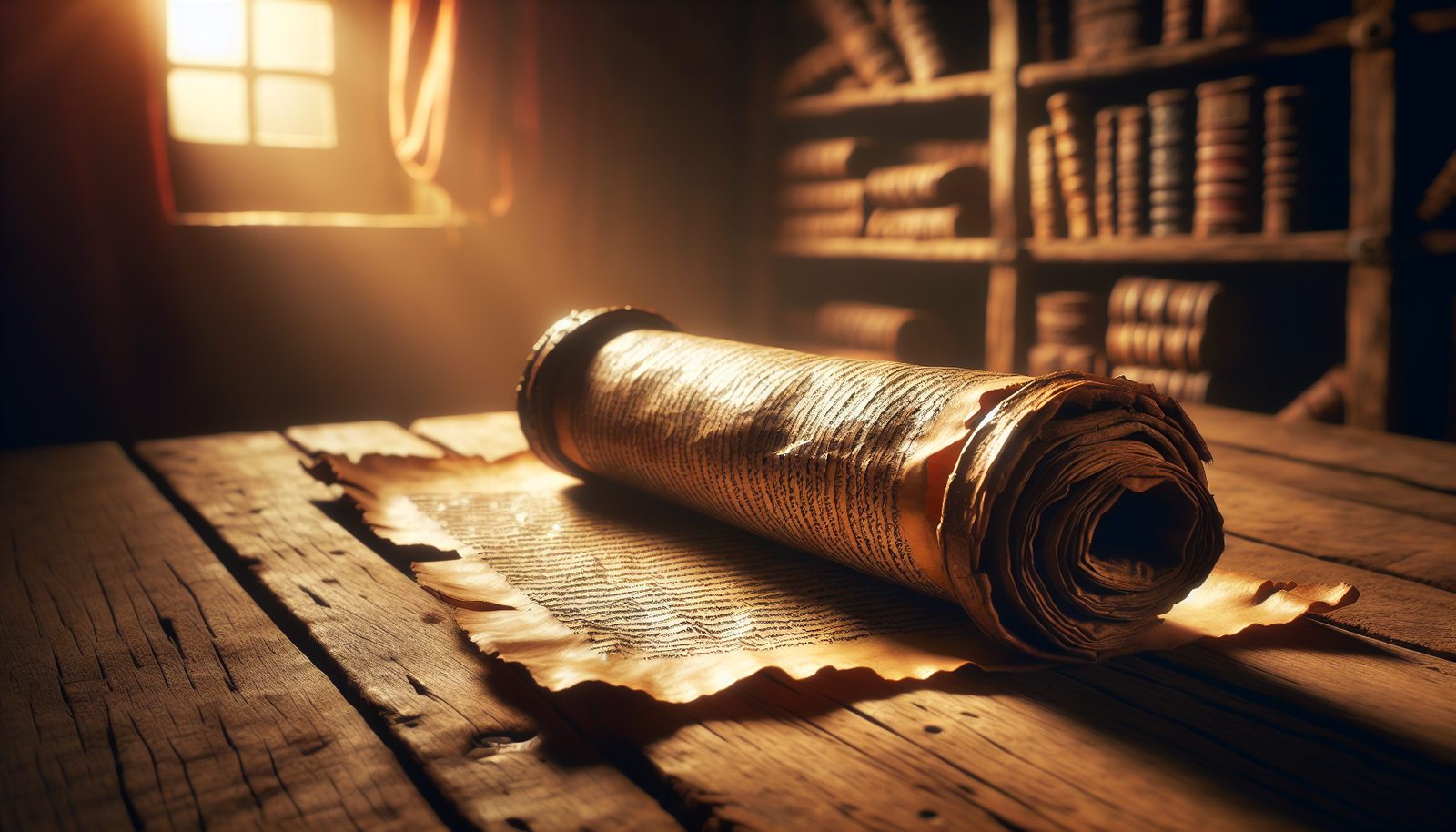What if a single mosaic could unlock the secrets of ancient festal rites? Picture this: a vibrant tapestry of colors and shapes preserved in time, offering whispers of a world long gone. The Galilean Synagogue Mosaic, unearthed in Israel, is not just a mere decoration but a portal to understanding the rituals and cultural life of its era. You’re about to step into a narrative woven with threads of history, faith, and intricate artistry.

The Discovery of the Mosaic
In 2009, a remarkable archaeological find caught the world’s attention—the Galilean Synagogue Mosaic in a site known as the Huqoq synagogue. This small village sat amid the rolling hills of Galilee, an area rich in biblical history. Excavated by a team from the University of North Carolina at Chapel Hill, this mosaic revealed an extensive floor decorated with scenes that reflect Jewish life and practices during the Byzantine period.
Finding a mosaic in this region is intriguing. Galilee played a significant role in the early Christian narrative and was home to influential figures such as Jesus and his disciples. The discovery of this mosaic calls to mind not just the artistry involved but also the cultural and religious practices of the time.
Artistic Features of the Mosaic
Upon closer examination, the vivid imagery of the mosaic captivates any onlooker. It spans approximately 600 square meters and is adorned with complex imagery showcasing various motifs.
Key Motifs and Their Meanings
Agricultural Themes
- Fruit-bearing trees, animals, and various types of produce populate the mosaic, suggesting the agricultural richness of the region.
- This imagery may symbolize abundance and divine blessing, vital themes in Jewish thought.
Biblical Stories
- The depiction of specific biblical narratives, including scenes that relate to festivals and rituals, serves to educate the faithful.
- Such illustrations were likely meant to inspire religious devotion among congregants who might see themselves echoed in these ancient stories.
Symbolic Elements
- Animals often hold double meanings in Jewish symbolism. For instance, the depiction of the lion could signify strength in faith.
- Understanding these elements can help you appreciate the theological implications embedded in the mosaic design.
The Significance of Festal Rites
What does it mean to engage in festal rites? In the Jewish tradition, festivals punctuate the calendar year, serving as touchstones for communal identity and spiritual reflection.
The Major Jewish Festivals
Passover (Pesach)
- Celebrating the Exodus from Egypt, Passover features rich allegorical themes of liberation and redemption.
- In this mosaic, there may not be direct imagery of the Seder plate, but the symbolism of freedom resonates through other motifs.
Shavuot
- Linked to the giving of the Torah at Mount Sinai, Shavuot marks the culmination of the Passover season.
- Imagery that reflects harvests can connect to the agricultural nature of this celebration, emphasizing gratitude for divine gifts.
Sukkot
- The Festival of Booths, Sukkot, celebrates the journey through the wilderness.
- Elements like palm fronds or structures mimicking temporary dwellings often appear in ancient art, linking them to the themes of hospitality and divine protection.
Ritual Practices Associated with Festivals
- Ritualistic acts associated with these festivals often include feasting, prayer, and communal gatherings.
- The presence of certain symbols in the mosaic could suggest how these practices were visually represented in the community’s daily life.
The Role of Synagogues in Festal Celebrations
Synagogues have always been more than mere places of worship. They are centers of community life where the sacred intersects with the social. In ancient times, engaging in festal rites within the synagogue context reflected a microcosm of broader Jewish life.
Gathering as Community
Collective Observance
- Festivals were times when the Jewish community would come together, strengthening their social bonds.
- The visual representation in the mosaic reminds you of the importance of gathering to share in joy and tradition.
Teaching and Learning
- The synagogue served as a place for educating members about their history, scripture, and traditions.
- This mosaic likely informed and reminded those who walked upon it about the richness of their heritage.
The Architectural Aspect
- Architecture of the synagogues, especially in Galilee, often highlights a blend of Hellenistic and Near Eastern influences.
- Pews, seating arrangements, and prayer niches likely facilitated gathering for prayers and teachings during these festivals.

Theological Implications
The Galilean Synagogue Mosaic offers a deep well of theological reflection. Each image invokes questions about how religious beliefs and practices were intertwined with daily life and community.
Divine Presence in Everyday Life
Symbolism of Ritual
- Every act during a festal rite manifests a belief in divine involvement in human affairs.
- The symbolism within the mosaic acts as a reminder of this connection and how deeply ingrained these beliefs were in the lives of ancient Jews.
Understanding Covenant
- The depiction of specific biblical narratives in the mosaic may reflect themes of covenant and divine responsibility.
- By bringing these ancient stories to life, the community reaffirmed its relationship with God through shared memory.
Unity through Diversity
- The mosaic demonstrates that the festal rites served to unify a diverse community under a shared identity.
- By partaking in these rituals, even amidst varied cultural backgrounds, individuals could find a common narrative to hold onto.
Archaeological Context
To truly appreciate the Galilean Synagogue Mosaic, one must understand the archaeological landscape in which this find sits.
The Historical Background
- Huqoq was a thriving town during the Byzantine period, evidenced by other archaeological finds in the region.
- Situated near major trade routes, the mosaic reflects interactions between diverse cultures and religions.
Excavation Insights
- Excavation teams unearthed not just the mosaic but also remnants of earlier buildings, indicating the long-standing importance of the site.
- The meticulous work of archaeologists brings modern insights to ancient practices, bridging time and tradition in fascinating ways.
Debates Surrounding Interpretation
The interpretation of archaeological finds like this mosaic often sparks debates among scholars.
- Ranging from discussions on artistic techniques to the sociopolitical context of the imagery, various angles present an enriching dialogue.
- You might find yourself pondering which interpretations resonate most and how they align with broader narratives in history.
Contemporary Reflections on Ancient Practices
In a world characterized by rapid change, the lessons and symbols of past ritual practices still offer wisdom today.
Cultural Festivals in Modern Society
- As communities celebrate their cultural heritage, many modern festivities echo the themes found in ancient practices.
- These celebrations foster connections, urging you to see how even strangers can become friends through shared joy.
The Importance of Memory
- Just as the mosaic preserves ancient imagery, modern life insists on remembering and honoring traditions that shape identity.
- Reflecting on how ancient communities engaged in festal rites can enrich your understanding of contemporary cultural practices and their significance.
Conclusion
The Galilean Synagogue Mosaic stands as a vibrant testament to ancient Jewish life, rich with festal rites and cultural significance. It is not merely art but a narrative tapestry illustrating spirituality, community, and historical continuity. These intricate designs foster a bridge to the present, stimulating your thoughts on faith, tradition, and the enduring human experience.
As you consider the stories echoed in the stones, remember that the past continues to influence the present, reminding you of the shared human yearning for connection, meaning, and celebration. In a world that often seems disconnected, the mosaic serves as a colorful call to recognize the threads that bind us—socially, spiritually, and culturally.



